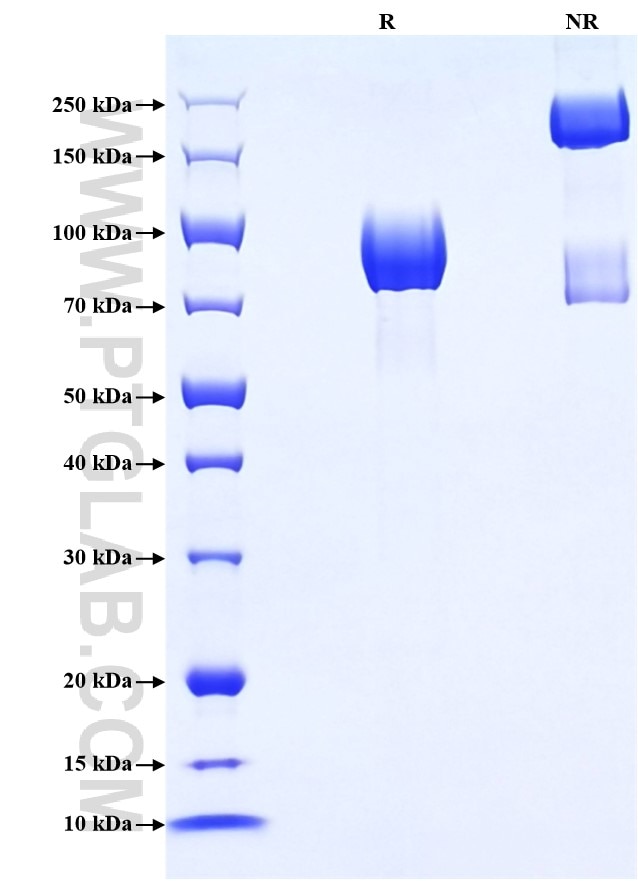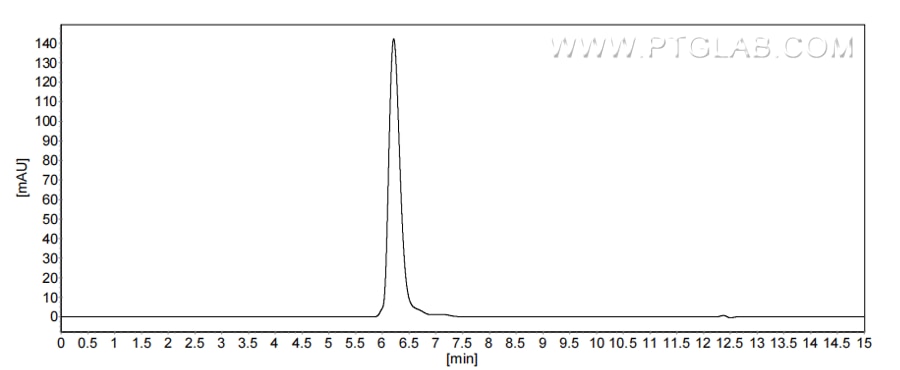Recombinant Human AXL protein (rFc Tag) (HPLC verified)
Species
Human
Purity
>90 %, SDS-PAGE
>90 %, SEC-HPLC
Tag
rFc Tag
Activity
not tested
Cat no : Eg1618
Validation Data Gallery
Product Information
| Purity | >90 %, SDS-PAGE >90 %, SEC-HPLC |
| Endotoxin | <0.1 EU/μg protein, LAL method |
| Activity |
Not tested |
| Expression | HEK293-derived Human AXL protein Glu33-Pro449 (Accession# P30530-1) with a rabbit IgG Fc tag at the C-terminus. |
| GeneID | 558 |
| Accession | P30530-1 |
| PredictedSize | 71.4 kDa |
| SDS-PAGE | 75-110 kDa, reducing (R) conditions |
| Formulation | Lyophilized from 0.22 μm filtered solution in PBS, pH 7.4. Normally 5% trehalose and 5% mannitol are added as protectants before lyophilization. |
| Reconstitution | Briefly centrifuge the tube before opening. Reconstitute at 0.1-0.5 mg/mL in sterile water. |
| Storage Conditions |
It is recommended that the protein be aliquoted for optimal storage. Avoid repeated freeze-thaw cycles.
|
| Shipping | The product is shipped at ambient temperature. Upon receipt, store it immediately at the recommended temperature. |
Background
Axl, also known as Ufo or Ark, is a receptor tyrosine kinase of the TAM (Tyro3, Axl and Mer) family. Axl is a single-pass type I membrane protein containing two fibronectin type-III domains, two Ig-like C2-type domains and one protein kinase domain. Axl mRNA is widely expressed with highest levels in the heart and skeletal muscle. Gas6 has been identified as a ligand for human Axl. Gas6/Axl signaling plays a role in cell survival, cell proliferation, migration and differentiation. Activation of Axl induces a broad range of activities including platelet aggregation and thrombus formation, macrophage and dendritic cell phagocytosis of apoptotic cells, NK cell development from hematopoietic progenitor cells, and in vivo angiogenesis.
References:
1. Markus Lauter, et al. (2019) Cell Commun Signal. 17(1):59. 2. J M E M Cosemans, et al. (2010) J Thromb Haemost. 8(8):1797-808. 3. Il-Kyoo Park, et al. (2009) Blood. 113(11):2470-7. 4. Heather M Seitz, et al. (2007) J Immunol. 178(9):5635-42. 5. Sacha J Holland, et al. (2007) Cancer Res. 65(20):9294-303.


